"We need to redefine the sleep cycle" says architect Jürgen Mayer H
Istanbul Design Biennial 2014: German architect Jürgen Mayer H has created a room filled with glowing pink light and ambient pink noise to explore how sleeping patterns could become "more nomadic" in the future (+ slideshow).
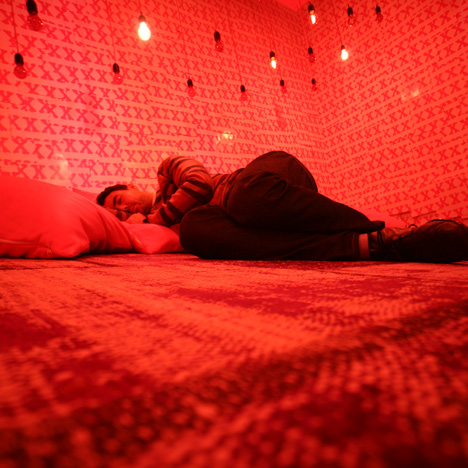
The architect, whose studio J Mayer H und Partner Architekten is based in Berlin, designed the Nap Gap room as a place where visitors to the Istanbul Design Biennial 2014 can enjoy a short snooze between exhibits.
His suggestion is that in the future, as the boundaries between work time and social time become blurred, the boundaries between sleeping and waking time will also become more flexible. He calls the concept "sleeping around".
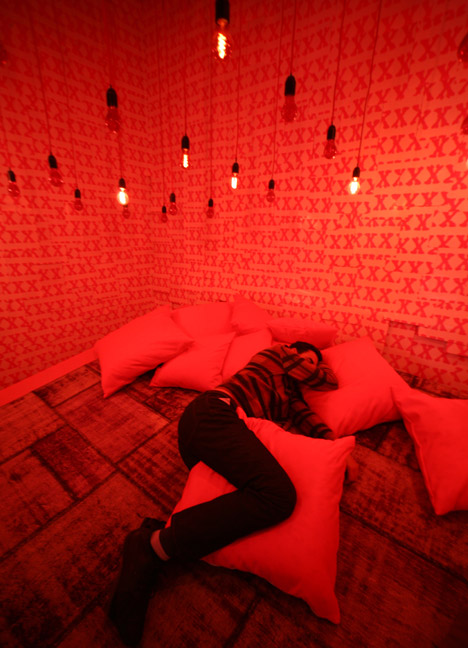
"The concept is that we break out of these solid patterns of sleep and work, and work is more nomadic and life is more nomadic, so we need to redefine the sleep cycle and the sleep moments," Mayer H told Dezeen at the exhibition opening.
"Sleeping around becomes a new term," he added. "It's about really finding these moments of momentary retreat, and then you're back in life."
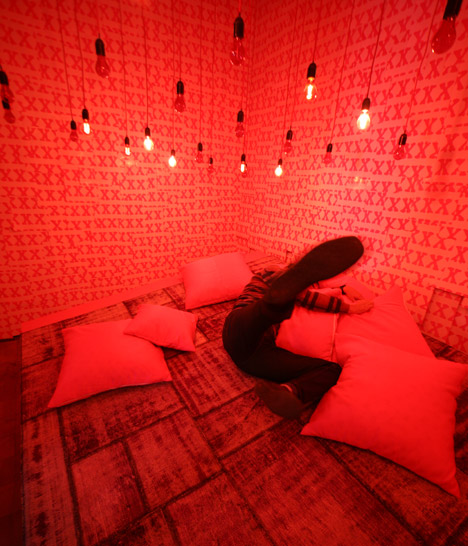
Mayer H's installation is designed especially for napping. Unlike other sleeping rooms designed for workplaces, like the popular Sleepbox, this is not a silent space and instead features a sound system that pumps out pink noise, which is understood to be sleep inducing.
Like white noise, pink noise contain all the frequencies that are audible to humans. However the power per hertz decreases as the frequency increases, creating a full-octave sound that masks low-frequency background noise.
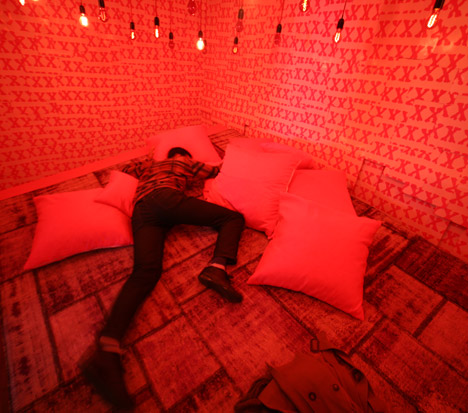
"There is a whole science now of different noises – there's white noise, brown noise, orange noise – and they're all different frequencies. But the pink noise is the one that somehow relates the best to sleep," said Mayer H, whose latest research has been centred around the architecture of sleep.
"If white noise blocks out all environmental sounds, then pink noise is the one that is closest to natural sounds, like rain, or leaves in the wind," he explained. "It is the one that is perfect for sleep-relative brain stimulation."
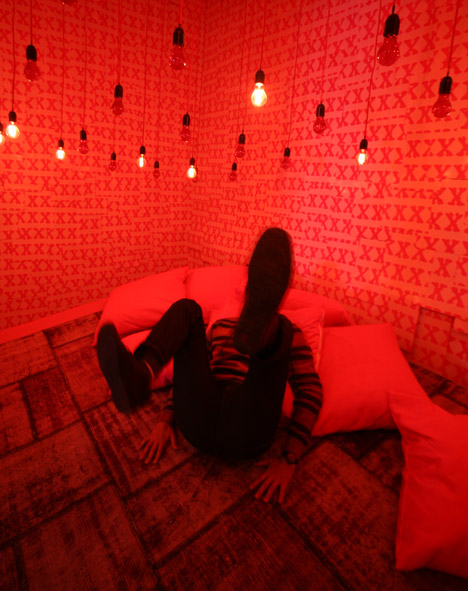
"You have to get used to the noise. At first you think it's really annoying, but then you lie down for a little bit and your body and brain get into it, and it really works."
Light bulbs hang from the ceiling, intermittently turning on and off to subtly change the pink glow in the room, while a cushion-covered ramp in the centre provides a place to lie down.
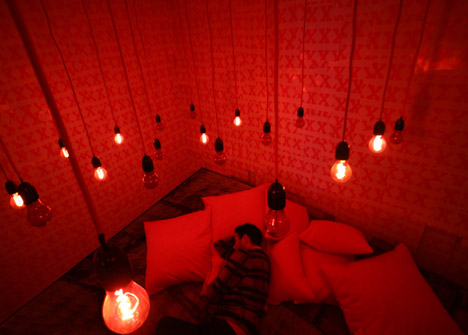
The walls are lined with wallpaper that has been decorated with X-shaped motifs, derived from data protection patterns.
"It's the perfect X-ing out pattern that we have, so visually it's what the sound does. X-ing out the environmental sound," said the architect.
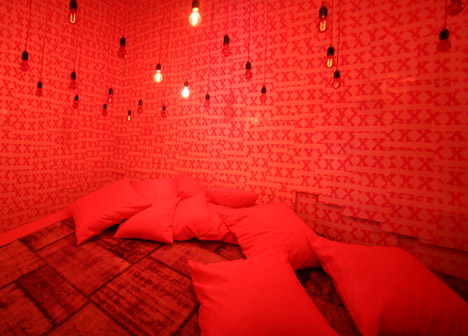
Mayer H says he would be keen to introduce a sleeping room in his studio. "America is more on the forefront than Germany for having sleep rooms for people working," he said.
"I think 45-minute naps are a rhythm that's pretty good and works with your sleeping cycles. Ten minutes is also very good, but everything between 45 and 90 minutes is very difficult, because you're in deep REM zones and you don't known where you are, and that makes it more difficult to come back."
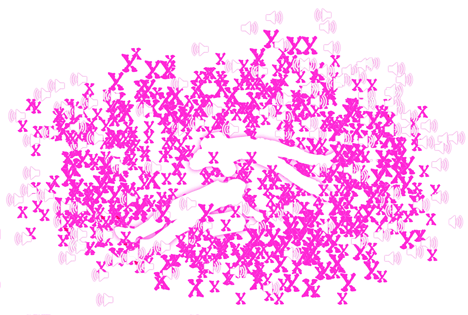
Nap Room is on show at the Galata Greek Primary School for the Istanbul Design Biennial 2014, which bears the title The Future Is Not What It Used To Be.